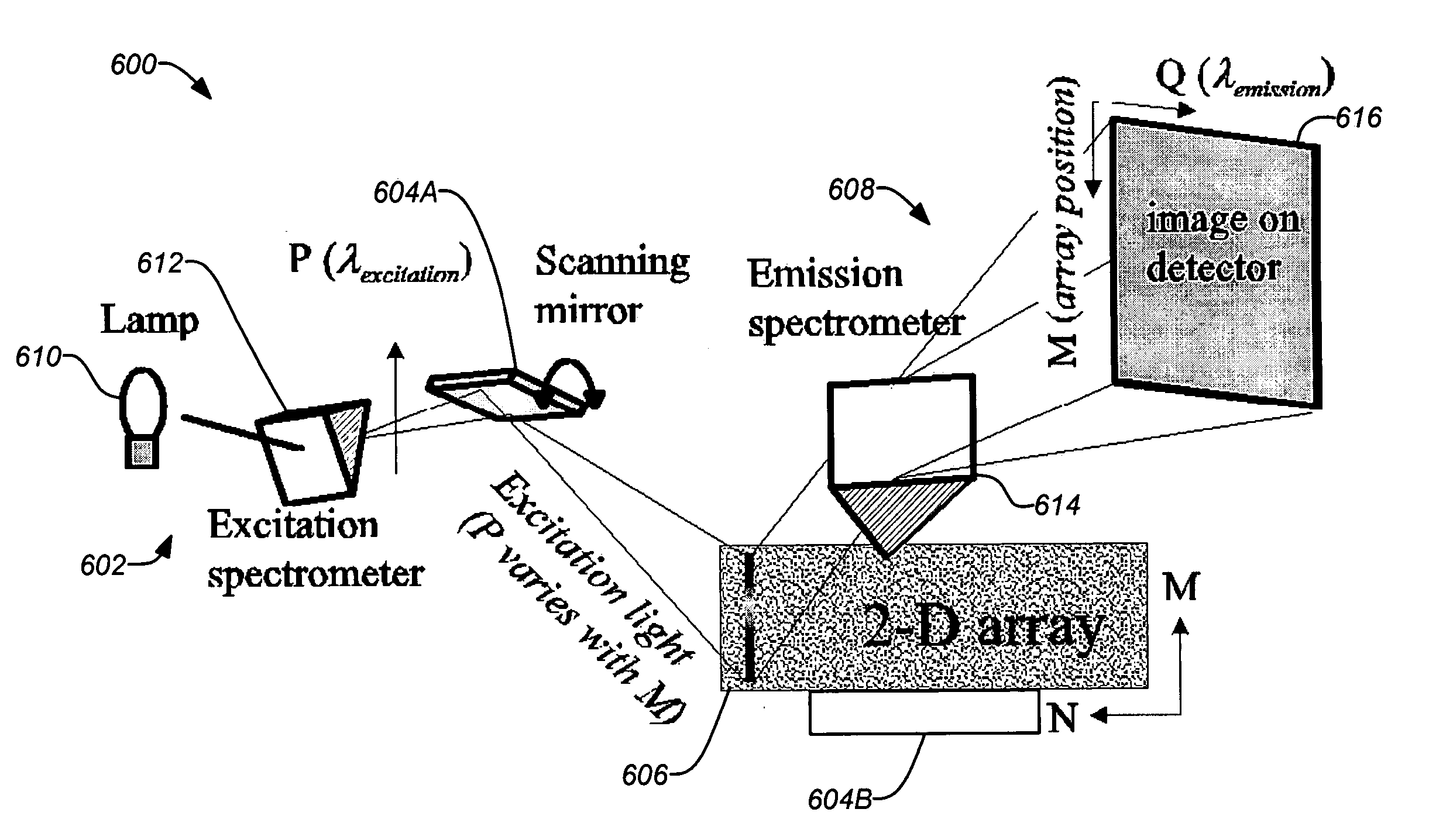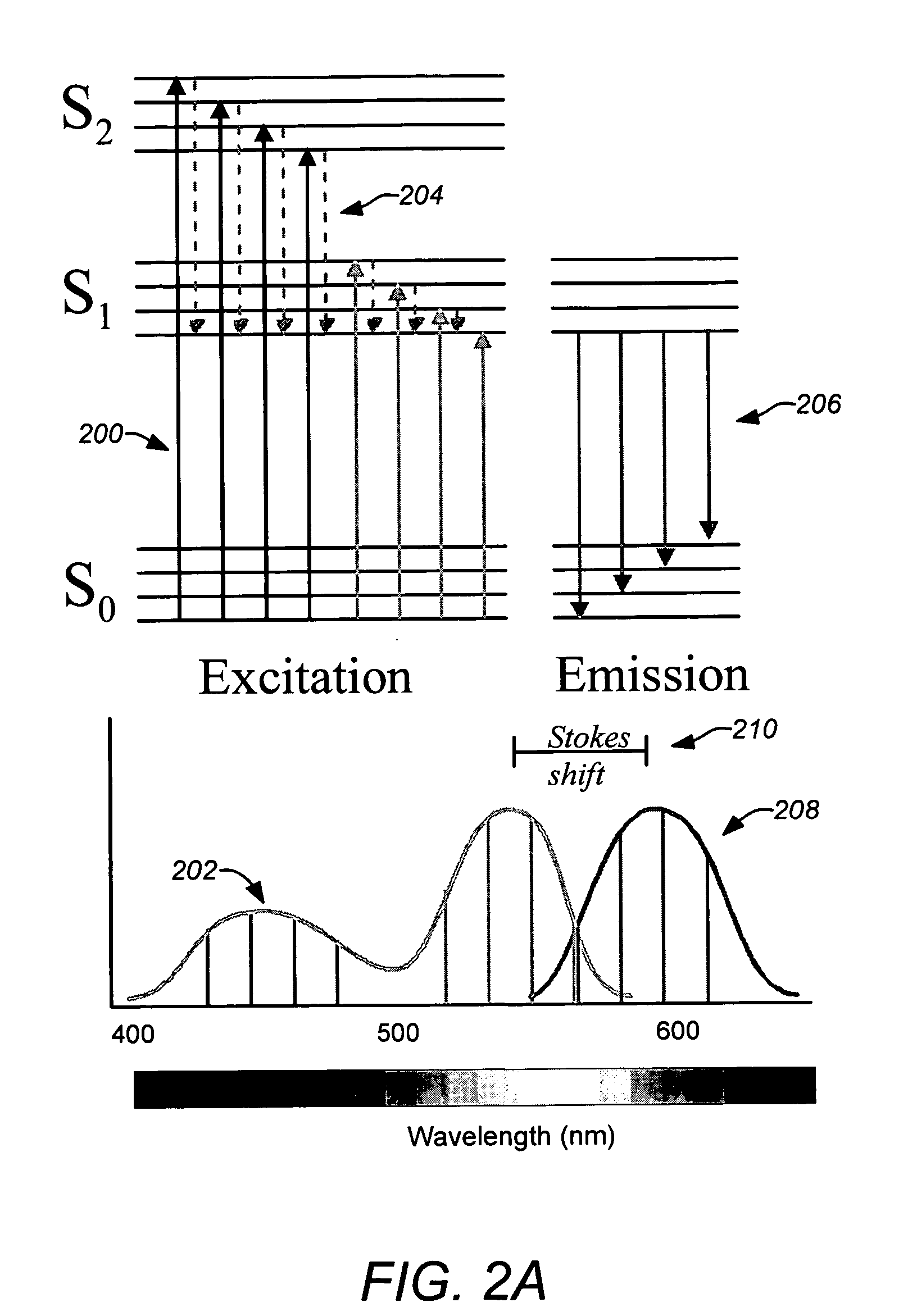Multiple-label fluorescence imaging using excitation-emisssion matrices
- Summary
- Abstract
- Description
- Claims
- Application Information
AI Technical Summary
Benefits of technology
Problems solved by technology
Method used
Image
Examples
Embodiment Construction
[0050] In the following description of the preferred embodiment, reference is made to the accompanying drawings which form a part hereof, and in which is shown by way of illustration a specific embodiment in which the invention may be practiced. It is to be understood that other embodiments may be utilized and structural changes may be made without departing from the scope of the present invention.
1. Overview
[0051] The present invention discloses methods and devices which apply an excitation-emission matrix (EEM) to a heterogeneous, two-dimensional sample, allowing a considerably larger number of fluorescent labels to be used simultaneously. This may be accomplished by employing a spectroscopic method of excitation-emission matrices which allows discrimination of species with similar fluorescent spectra. Embodiments of the invention may employ a novel excitation-light scanning technique which maximizes the throughput of excitation light, increasing the sensitivity and hence the r...
PUM
 Login to View More
Login to View More Abstract
Description
Claims
Application Information
 Login to View More
Login to View More - R&D
- Intellectual Property
- Life Sciences
- Materials
- Tech Scout
- Unparalleled Data Quality
- Higher Quality Content
- 60% Fewer Hallucinations
Browse by: Latest US Patents, China's latest patents, Technical Efficacy Thesaurus, Application Domain, Technology Topic, Popular Technical Reports.
© 2025 PatSnap. All rights reserved.Legal|Privacy policy|Modern Slavery Act Transparency Statement|Sitemap|About US| Contact US: help@patsnap.com



